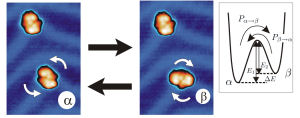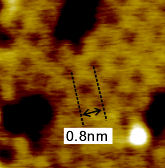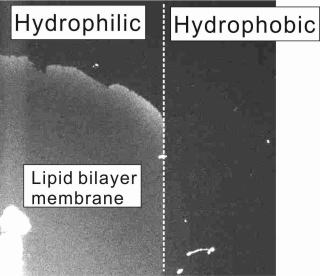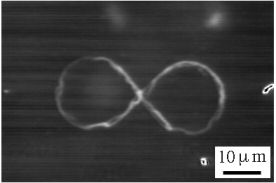Mechanisms of Molecular Self-assembly,
Manipulation of a single molecules for molecular devices.
Characterization using Scanning Tunneling Microscopy (STM) and
Atomic Force Microscopy (AFM)
Organic
molecule has a large potential for future electronic
devices.
Self-assembly behaviors and electronic properties are
analyzed by STM and AFM to use them for the devices.
|
 |
|
Synthesis and characterization of
Graphene and nanostructures
Fabrication
of graphene nanostructures including graphene nanomesh
that has a bandgap by bottom-up process is a key for
application to electronic devices because of their precise
control of the structure.
We are developing the method of the bottom-up process for
graphene nanostructures, which are analyzed by STM and
XPS.
|

|
|
Molecuar
detection using a single nanopore
Excitation of
fluorescent molecule by near-field around a nanopore can
be applied to a single molecular detection devices. We are
developping the techniques for realize such devices. |
 |
|
Control
of Self-spreading of lipid bilayers by patterned self-assembled
monolayer.
Surfaces
coated by a self-assembled monolayer influence
self-spreading behaviors of lipid bilayers, which can be
applied to control of molecular transfer on the surface.
|
 |
|
Control
of motor protein by surface nanostructures
Functions
of motor protein are controlled by nanostructures on a
surface. It can be applied to the molecuar transfer in
micro TAS.
We are developping a new control techniques by using
nanostructures and plasmons. |
 |
|
|





